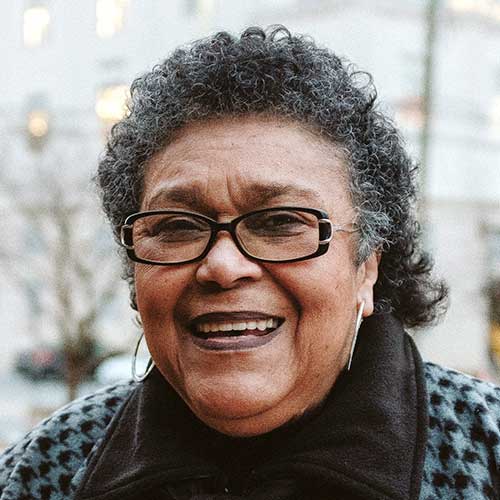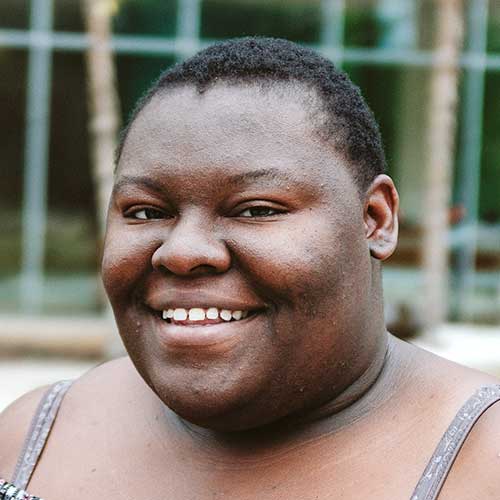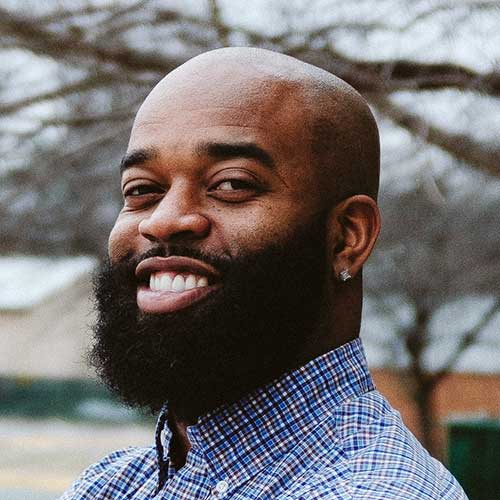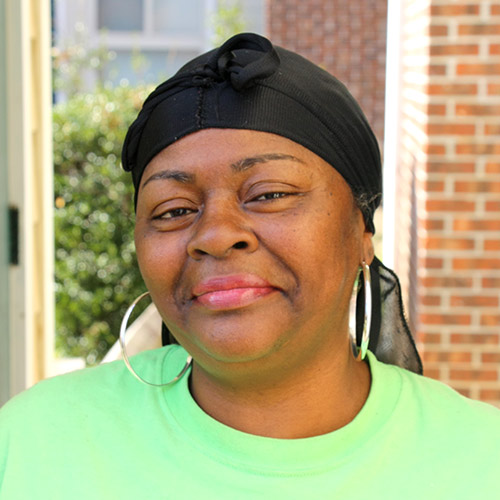1996
1996
The fence goes up
Description
- In January, a giant black 7-foot tall metal fence is erected around Garrett Square. It spans the spaces between the residential buildings, blocking residents from three sides of their property. The fences funnel all pedestrian and vehicle traffic through one entrance on Monticello Avenue.
- Residents immediately object, saying that the fences cage them in. They seek legal help from the Legal Aid Justice Center.
- In February, city resident Betty Gross writes an op-ed in the Daily Progress criticizing the fence as “a monstrosity” and says it “has done nothing to attack the remaining drug problem.” She says to take it down.
- In April, about a dozen Garrett Square residents take a police training class to launch a neighborhood watch patrol.
- In June, the Garrett Square Tenant Association is relaunched, after being dormant for some time. They elect new leadership, including Mary Carey as president.
- The Tenant Association writes a petition demanding the fence be taken down.
- In June, the Daily Progress publishes an editorial, imploring residents to fight the “criminals” and not take their frustration over the fence out on Garrett Square’s property management.
- In August, Garrett Square residents say the fence is a safety hazard for police, fire and medical personnel. They say it’s inconvenient for school kids, who, despite having the bus stop 50 feet from their front doors, have to walk down to Monticello Avenue and up to Second Street Southeast to catch the bus to school.
- Charlottesville Police Sgt. Frank Upman says crime is down this year, but he is not sure if it is related to the fence.
Quote
Explain to the residents here: How is this fence safe? Who is it protecting?
— Mary Carey, president of the Garrett Square Tenant Association
People
What do you remember about when the fences went up? (Part 1)
What do you remember about when the fences went up? (Part 2)
What do you think should be done with the fence around Friendship Court?
What do you think about the fence around Friendship Court?
What do you remember about the fence around Garrett Square?
What do you think about the fences?
How do you feel about the fences?
The Reimagining of Friendship Court
INTRO
By
Jordy Yager
The redevelopment of Friendship Court is slated to be the largest new construction of low-income housing undertaken in Charlottesville in more than two decades. The plan alone is groundbreaking, having been directly created by current Section 8 residents in partnership with Piedmont Housing Alliance. City staff calls it the most nuanced and complex plan they’ve ever encountered. It ambitiously attempts to balance promises of zero resident displacement with the city’s broader affordable housing needs, while also calling for hundreds of new, likely higher-income, residents to move in, as residents hope to de-stigmatize the lasting effects of poverty born out of generations of racist government policy and neglect.
This year will be the make-or-break year for Friendship Court’s redevelopment efforts. Millions of dollars in city, federal, and private funding stand between the massive plan and the highly anticipated 2020 groundbreaking. And while the green lights have begun to align and most residents are excited, the plan has its critics — those who call for greater levels of resident autonomy, greater security measures to guard against social and cultural displacement, and greater reparations for past wrongs.
In crafting this project, we’ve tried to tackle all of this and more by separating the longer narratives into five major questions:
Part 1: What is the plan?
Part 2: How did we get here?
Part 3: Does mixed-income housing work?
Part 4: Who does Friendship Court belong to?
Part 5: What’s next?
But we also wanted to give you access to as much of our reporting as possible, so we’ve created a timeline that details the history of this area, dating back 150 years, through the use of more than 130 maps, documents, archived articles, and photographs. Similarly, we wanted you to actually hear each of the two dozen long-form interviews we conducted, and not merely the portions we’ve included in the individual stories. So we’ve included more than 300 audio clips throughout the story: in the articles, the timeline, and on each person’s profile page. Our hope is that with all this, more of the picture will begin to emerge, and that, as we stand ready to make powerful and significant changes in the city, we all can help craft the solutions.
The redevelopment of Friendship Court is slated to be the largest new construction of low-income housing undertaken in Charlottesville in more than two decades. The plan alone is groundbreaking, having been directly created by current Section 8 residents in partnership with Piedmont Housing Alliance. City staff calls it the most nuanced and complex plan they’ve ever encountered. It ambitiously attempts to balance promises of zero resident displacement with the city’s broader affordable housing needs, while also calling for hundreds of new, likely higher-income, residents to move in, as residents hope to de-stigmatize the lasting effects of poverty born out of generations of racist government policy and neglect.
This year will be the make-or-break year for Friendship Court’s redevelopment efforts. Millions of dollars in city, federal, and private funding stand between the massive plan and the highly anticipated 2020 groundbreaking. And while the green lights have begun to align and most residents are excited, the plan has its critics — those who call for greater levels of resident autonomy, greater security measures to guard against social and cultural displacement, and greater reparations for past wrongs.
In crafting this project, we’ve tried to tackle all of this and more by separating the longer narratives into five major questions:
Part 1: What is the plan?
Part 2: How did we get here?
Part 3: Does mixed-income housing work?
Part 4: Who does Friendship Court belong to?
Part 5: What’s next?
But we also wanted to give you access to as much of our reporting as possible, so we’ve created a timeline that details the history of this area, dating back 150 years, through the use of more than 130 maps, documents, archived articles, and photographs. Similarly, we wanted you to actually hear each of the two dozen long-form interviews we conducted, and not merely the portions we’ve included in the individual stories. So we’ve included more than 300 audio clips throughout the story: in the articles, the timeline, and on each person’s profile page. Our hope is that with all this, more of the picture will begin to emerge, and that, as we stand ready to make powerful and significant changes in the city, we all can help craft the solutions.










